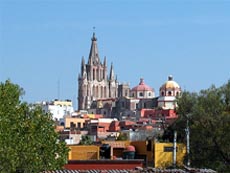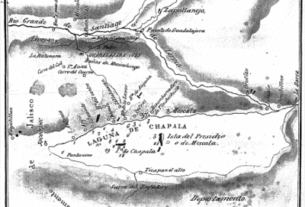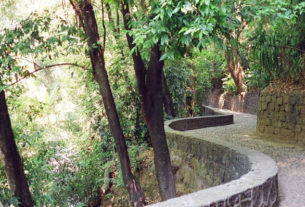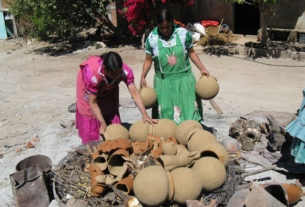Earlier this year, a woman said to me at a cocktail party, “So you hate the United States?”
“What?” I’m sure my eyebrows leaped nearly to my hairline with surprise. I wondered whether she’d been lying in wait for me.
“You call yourself an expatriate. You even admit it right here.” Her left hand raised my own book as an indictment, and her extended right forefinger stopped an inch from my sternum, already scarred from previous encounters of this kind.
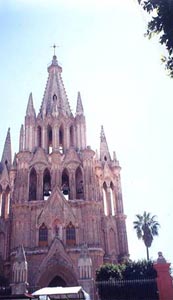
© Jim Sweeney, 2008
You never know what to expect at a book event. I knew she owned a number of my mysteries, set mostly in Mexico, where I live, because I’d autographed three of them for her at a book signing earlier. She’d also picked up my nonfiction book on the life-changing experience of many Americans and Canadians who also live in San Miguel de Allende.
“I am an expatriate,” I said, calmly, trying to smile.
“See! I read that on the cover.”
“Being an expatriate has nothing to do with a lack of patriotism, it merely means a person who lives in a country he wasn’t born in. You must be thinking of ex-patriot; someone who’s turned against his country. It’s a different spelling, like here and hear. If you’d been born in Minnesota, where would you choose to live?”
“I think I would’ve declined to be born in Minnesota. My family’s all here.” As if making a point I couldn’t refute, she walked away.
I didn’t know whether she’d gotten my message or not, but I still appreciated her as a reader. They come with all different points of view.
In that book in her left hand, which I’d titled San Miguel de Allende: A Place in the Heart, I investigated what it meant for 32 different people to leave home, often at an age well past youth. To leave the familiar behind and encounter — usually with some discomfort — a new country and a new set of friends, a new way of life.
Usually the reasons are about experiencing a new culture and a different kind of weather, as they were for me. And they’re always about reinventing yourself against a background that in Mexico I think of as simpático. It welcomes people in a mood for a lifestyle change.
But how does it work, really? What is the detail? On the Internet you can easily see the colonial architecture, which reminds you of Europe. After all, San Miguel was founded in 1542, a date when the founding of the Plymouth Colony in Massachusetts was still 78 years away. It’s old in its bones.
You already know that winters are starting to tell you in unpleasant detail around your joints what it means to continue in the climate where you live now. You know that real Mexican food is great, because you subscribe to Bon Appetit magazine, and you also know you can’t get the real thing in the States without a lot of research.
It doesn’t hurt that Mexico is also top heavy with charm and character, and the people are warm and inviting.
But you can’t get by on great food alone; you need Internet, golf, a top-notch dentist, good health care, a trained mechanic to maintain your car, and a sense of community and security — a challenging word, since you’ve read about the drug wars. You know what all the commentators are saying. And even though you realize that it’s all because they are competing for your drug dollar, you don’t use drugs other than Lipitor and Viagra, so it’s definitely not reassuring. Amen.
It turns out that it’s not about Lipitor. It’s about heroin and cocaine. If that’s your reason to come to Mexico, stop reading right here and stay in San Francisco or Austin. But if you have other reasons to check out this lifestyle, you will do so in a greater degree of safety than you could in the States, contrary to what the media would have you believe.
What is the solution to this ugly dilemma?
Well, it turns out that staying safe requires nothing different than the method you already use — and it’s been working for you quite well all your life. It’s called savvy.
You know the trouble spots in the United States or Canada. That’s easy, and you respond by avoiding them as you lead a perfectly normal life. But you do not shun Pensacola because the thought of visiting Detroit makes you queasy.
It will be no surprise that the same approach works well in Mexico, where there are 2,500 municipalities. The drug battles are focused in some twelve to fifteen of them. The safety level in the other 99.5% is about the same as living in rural Iowa. Naturally, it still pays to avoid cows with horns.
Once over this hump you will discover a lifestyle blooming with options.
Do you have a fondness for horses? Equestrian sports are everywhere in Mexico, from cow sorting to dressage and jumping.
Are you a fan of the arts? Art galleries and studios abound. Lessons in painting and sculpture are offered around every corner.
Like to dig in and serve your community? San Miguel can supply more than a hundred ways to improve the environment and the status of local people.
Or would you just like to kick back and relax after a demanding career? The Jardin, our local plaza, is San Miguel’s living room, like others throughout Mexico, where expats and locals mix and trade stories from the weather to life in general, to sports and culture.
All this with 330 days of sunshine a year. Don’t miss the chamber music and jazz festivals, the annual writer’s conference, the opera scene, and the dozens of active art galleries.
Tired of tortillas? Try the two world-class supermarkets at the edge of town. If you like, you can shop or the Office Depot, the Liverpool department store, and the other big box stores in close-in neighboring towns. How about a Sassoon-trained hair stylist?
Many of these points focus on San Miguel de Allende, my own town, but similar resources flourish all over Mexico, as do expat communities where others who’ve been there a while can show you the ropes. The communities are supportive of newcomers and the Internet can readily tell you what’s going on almost anywhere.
Mexico is an opportunity not to be missed, so don’t let yourself be stopped by the border — if it’s anything like mine, your future has no borders.

